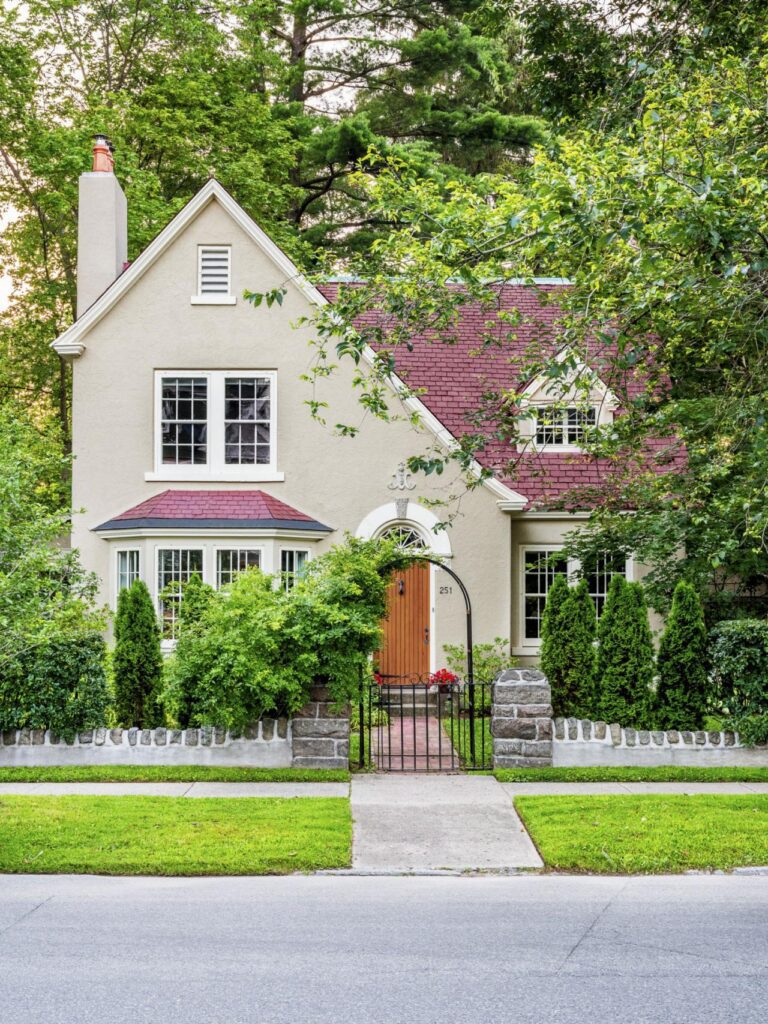Landscaping is a fantastic way to turn your outdoor space into a picturesque haven. Whether you have a sprawling garden or a tiny backyard, it offers a world of possibilities. In this article, we’ll explore the art and science of landscaping, including its benefits, planning, DIY options, professional help, and essential landscaping elements.
Benefits of Landscaping
Aesthetic Appeal
Landscaping isn’t just about planting a few flowers; it’s about creating a visual masterpiece. Well-designed landscapes enhance the overall beauty of your property, making it a sight to behold. Think of it as nature’s artwork that you can enjoy right outside your window.
Property Value
Investing in landscaping can significantly boost your property’s value. A well-maintained garden and outdoor space can increase the resale value of your home. It’s like adding a layer of charm to your property that potential buyers won’t be able to resist.
Environmental Impact
Landscaping can have a positive environmental impact. By planting trees and shrubs, you contribute to cleaner air and reduced carbon emissions. Plus, it provides a habitat for birds and insects, fostering biodiversity right in your backyard.
Planning Your Project
Budgeting
Before you start digging into the soil, create a budget. Decide how much you’re willing to invest in your landscaping project. Having a budget will help you make informed decisions about the plants, materials, and features you want to include.
Choosing the Right Plants
Selecting the right plants is crucial. Consider factors like climate, soil type, and maintenance requirements. Native plants are often a great choice as they thrive in your region and are easier to care for.
Design Principles
A beautiful landscape is a well-planned one. Consider design principles like balance, unity, and focal points. Think about how different elements will work together and create harmony in your outdoor space.
DIY vs. Professional Landscaping
DIY Landscaping
If you’re the hands-on type and love a challenge, you can opt for DIY landscaping. It’s a cost-effective option, but it requires time, effort, and a certain level of expertise. Do your research and be prepared for some physical labor.
Hiring a Professional
For a truly remarkable landscape, consider hiring a professional landscaper. They bring experience and creativity to the table. Professionals know how to turn your vision into reality and save you time and potential headaches.
Landscaping Elements
Hardscape vs. Softscape
Landscaping involves both hardscape and softscape elements. Hardscape includes features like patios, pathways, and retaining walls. Softscape refers to plants, trees, and lawn. Balancing these elements is crucial for a harmonious landscape.
Trees and Shrubs
Trees and shrubs provide shade, privacy, and character to your outdoor space. They also offer a touch of nature’s tranquility. Choose species that thrive in your region and fit your landscape design.
Water Features
Water features like fountains, ponds, or waterfalls add a soothing and luxurious touch to your landscape. The gentle sound of flowing water can create a peaceful ambiance that’s perfect for relaxation.
Lawn Care
A lush green lawn is a hallmark of a well-kept landscape. Proper mowing, watering, and fertilizing are essential for a healthy and vibrant lawn. Don’t forget regular pest control and aeration to maintain its beauty.
Landscaping Maintenance
Seasonal Care
Landscaping requires year-round care. Different seasons bring unique challenges and tasks. From spring pruning to winter protection, understanding the seasonal needs of your landscape is crucial.
Pest Control
Pests can wreak havoc on your plants and lawn. Learn how to identify and control common garden pests effectively. Use eco-friendly methods to protect your plants and the environment.
Mulching and Fertilizing
Mulching helps retain moisture and control weeds, while fertilizing provides essential nutrients to your plants. Proper mulching and fertilizing practices are essential for plant health.
Conclusion
Landscaping is an art that brings nature’s beauty right to your doorstep. It offers a myriad of benefits, from enhancing your property’s value to creating a welcoming environment for your family and wildlife. Whether you choose to DIY or hire a professional, a well-planned landscape will transform your outdoor space into a stunning retreat.
FAQs
- How much should I budget for a landscaping project?
- The budget for landscaping can vary widely depending on the scope of your project. It’s best to assess your goals, the size of your outdoor space, and the features you want before setting a budget.
- What are some low-maintenance plants for landscaping?
- Low-maintenance plants include succulents, native grasses, and perennial flowers. They require minimal care and are perfect for busy homeowners.
- How often should I water my lawn?
- The frequency of lawn watering depends on factors like weather and soil type. Generally, lawns need about 1-1.5 inches of water per week. Adjust your watering schedule accordingly.
- Can I incorporate eco-friendly practices in my landscaping?
- Absolutely! You can use sustainable landscaping techniques like rain gardens, native plantings, and composting to reduce your environmental impact.
- What is the best time of year to start a landscaping project?
- Spring and fall are ideal seasons for landscaping projects, as the weather is mild, and plants have a better chance to establish themselves. However, you can start smaller projects any time of the year.

